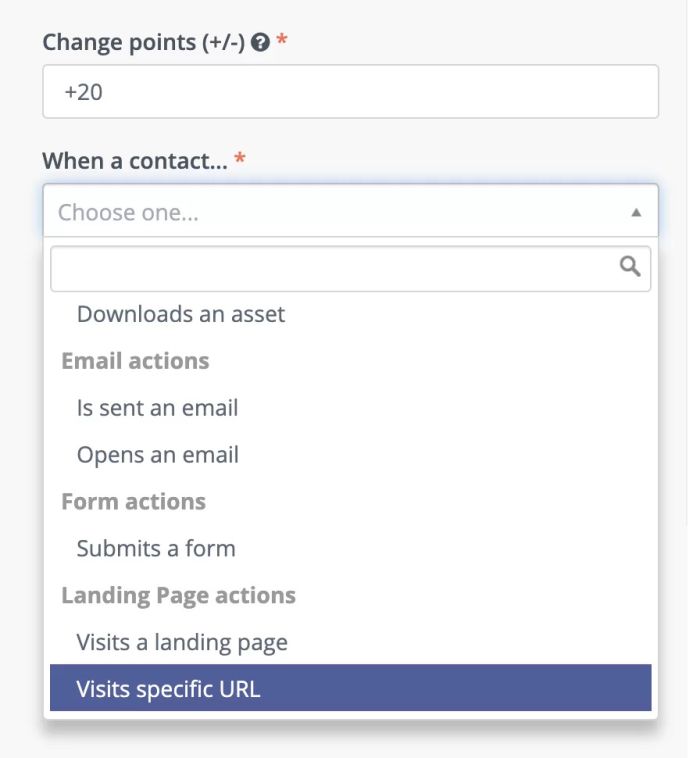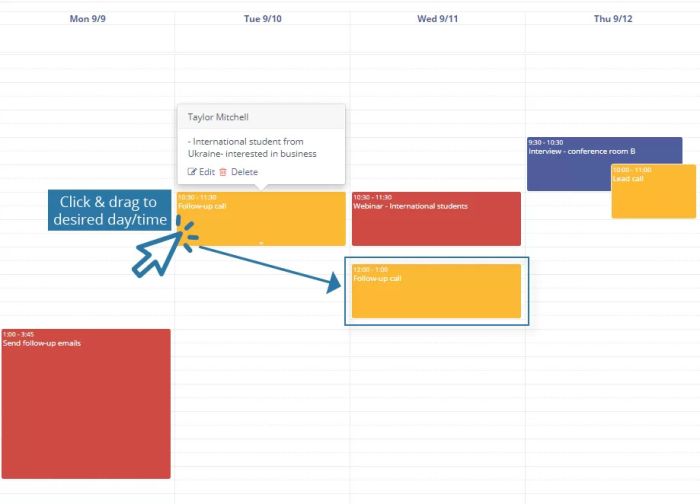Although 2024 has only just begun, if you’ve already set your recruitment objectives, now is the ideal moment to contemplate the strategies you’ll be putting into action for the year ahead. For schools that haven’t started using a Customer Relationship Management (CRM) system tailored for the educational industry, this might be one of the strategies you might want to consider this year. In addition to improving student recruitment and engagement, CRM systems can streamline administrative operations and help schools make data-driven decisions.
Over the years, we’ve witnessed educational institutions leveraging education CRMs achieve increased enrollments, deliver enhanced student experiences, and operate more streamlined administrative processes. Therefore, as you seek to improve your recruitment endeavors in 2024, adopting a CRM for higher education isn’t a choice but a necessity. Continue reading to delve deeper into the significance of implementing an education-industry-focused CRM.
What is the Purpose of a CRM for Higher Education?
A Customer Relationship Management (CRM) system is a tool designed to help businesses manage their interactions and relationships with current and potential customers. Its goal is to help organizations build and maintain strong, lasting relationships with their customers by centralizing and organizing data and interactions. Education CRM systems are specifically designed to meet the needs of educational institutions, helping them manage their interactions and relationships with students, parents, alumni, and other actors in their ecosystem. Some key features of an education CRM include student recruitment and enrollment, student information management, course management, and analytics and reporting. In addition, CRM systems like Mautic by HEM empower educational institutions to initiate SMS and email campaigns, craft dynamic email content, and design compelling landing pages, just to name a few of its capabilities.

One of the main advantages of using education CRM software over regular CRM software is that those designed for the education industry can make recruiting students and managing schools’ enrollment funnels much easier. Thus, adopting a CRM system can help streamline your school’s recruitment processes and enhance your team’s productivity.
Benefits of Adopting a CRM for Higher Education in 2024
Why is CRM becoming increasingly important in recent years? The increased popularity of CRM systems can be attributed to the fact that they help businesses meet customer needs and expectations while streamlining their customer relationship management processes. Within the educational sector, schools that adopt CRM systems are better equipped to respond to the evolving needs of students and parents, gaining a competitive edge in the education sector. Thus, assuming a CRM for higher education in 2024 can increase efficiency, improve student experiences, and improve outcomes for institutions as they navigate the changing landscape of education and competition for students and resources.
If your school still needs to use a CRM, 2024 is the year to start! This year, customization and automation will be key for schools to thrive, and a robust CRM system can enable you to remain at the forefront of these evolving trends. Below are some of the advantages that an education CRM can offer to your school’s initiatives.
1. Streamline Your School’s Lead Management
CRM systems can help schools streamline student recruitment processes by managing leads, tracking inquiries, and providing insights into recruitment strategies, ultimately leading to higher enrollment. Finally, this will help you improve efficiency and cost-effectiveness.
Given that not every lead your school generates is qualified, a higher ed CRM will help you identify and focus on quality leads, ensuring that your school can allocate resources effectively and enhance your enrollment efforts. Systems like Mautic enable automatic lead scoring based on behavior and demographic factors for incoming leads. Subsequently, the score will automatically update as the contact’s engagement with your school changes.
The program lets you manage the different actions a contact could take to impact their lead score, such as opening or replying to emails, visiting landing pages, downloading assets, or submitting a form. As seen in the picture below, the field labeled “Change points” gives you the option to increase or decrease a designated number of points when a contact accomplishes a specific action, which you can define within the “When a contact…” drop-down menu.

2. Nurture Your Leads
Education CRM systems are designed to facilitate lead nurturing campaigns, allowing your school to provide a consistent and engaging experience to maintain your prospects’ interest. These campaigns may include personalized email sequences, SMS notifications, and targeted content delivery. Also important is the fact that CRM for higher education systems enables multichannel engagement, increasing the chances of reaching prospects where they are most responsive.
For instance, you can schedule email sequences or drip campaigns to send relevant information and reminders at specific intervals to your prospects, ensuring that they stay engaged without feeling overwhelmed. A positive quality of these systems is that you don’t need to limit your parameters when creating lead nurturing campaigns, as they allow you to build complex campaigns with endless parameters.
3. Improve Your Enrollment Funnel
In addition to letting you identify quality leads and nurture these leads, higher education CRM systems can help your school work more efficiently during admissions periods. You can streamline admissions processes and manage your enrollment funnel to ensure no leads fall through the cracks. For example, using Mautic’s calendar, your team can track meetings, tasks, and deadlines and assign leads and follow-up tasks.

Schools can also guide potential students through the decision-making process through different CRM functions, answering their questions and addressing their concerns at each stage. In addition, CRM systems allow schools to assist in academic advising and provide support services for new and existing students, ensuring that they receive the assistance they need for a successful educational journey.
Example: On Mautic’s application dashboard, schools can see the names and emails of applicants, as well as which type of application they’ve created. In addition, the dashboard shows each applicant’s payment status, progress status, and contact type as the updated and created dates.

4. Personalized Communication for Impactful Messaging
If you are considering getting a CRM for higher education, you might ask yourself, “How does CRM benefit an academic environment?” Enhancing communication with both current and prospective students is a primary means through which education CRM systems can positively impact your academic community.
CRM systems allow for personalized communication with students, enabling institutions to engage and support them more effectively and ensuring that prospective students receive relevant information and follow-ups–which can lead to higher retention rates. For instance, you can use lead segmentation to create personalized messages that appeal to your leads wherever they are in the enrollment process.
5. Contact Management Made Easy
An outstanding benefit of implementing a CRM in education is its ability to streamline contact management for schools. CRM systems let you manage the assignment and segmentation of every contact and keep notes and records of every touchpoint. You can create a centralized database for storing contact details, including names, addresses, email addresses, phone numbers, and other pertinent information. This guarantees that authorized users can readily access all contact data.
While in many regular CRMs, the process of editing a contact typically involves entering an editing interface, modifying the required field, and subsequently saving the entire communication, which can be a time-consuming endeavor, education CRMs like HEM’s Mautic CRM allow schools to alter their connections with a simple click.
CRM for higher education systems can also automate routine tasks related to contact management. For example, schools can automate tasks like follow-up emails, reminders, and lead assignments. In addition, schools can get insights into contact engagement, conversion rates, and other relevant metrics that can help them assess the effectiveness of their contact management strategies. All these not only help schools save time but also allow them to focus on more strategic activities.
Top 3 CRM Trends to Watch This Year
Finally, if you are looking to start the year on the right foot, we suggest that, in addition to implementing a CRM for higher education, you keep an eye on the following trends:
- Automation: Automation within a CRM system refers to using technology and predefined rules to automatically execute repetitive, manual tasks and processes. Through automation, you can create workflows to help your school automatically handle lead distribution, event invitations, registrations, and email and SMS marketing, among other elements of your admissions and marketing procedures in your school. Using automation will allow you to save time and money throughout the year.
- Hyper-personalization: The more personalized your messages are, the more likely they will turn prospects into successful leads. This year, you should focus on getting comprehensive and detailed CRM data to ensure your campaigns have highly personalized messages.
- Mobile CRM: As users rely increasingly on mobile devices to connect with the world, mobile CRM becomes a must. CRM systems that are mobile-friendly are likely to perform better this year.







